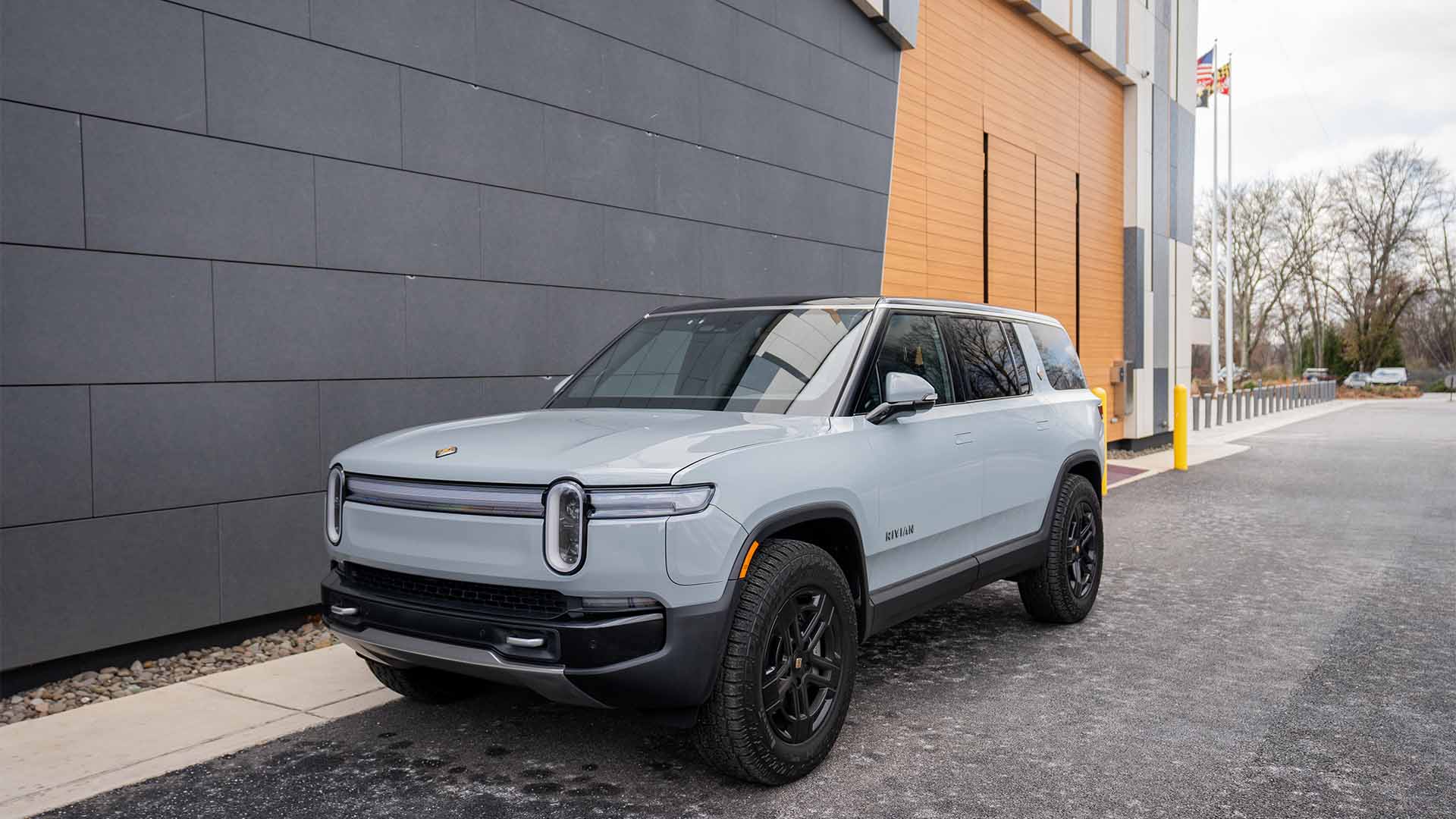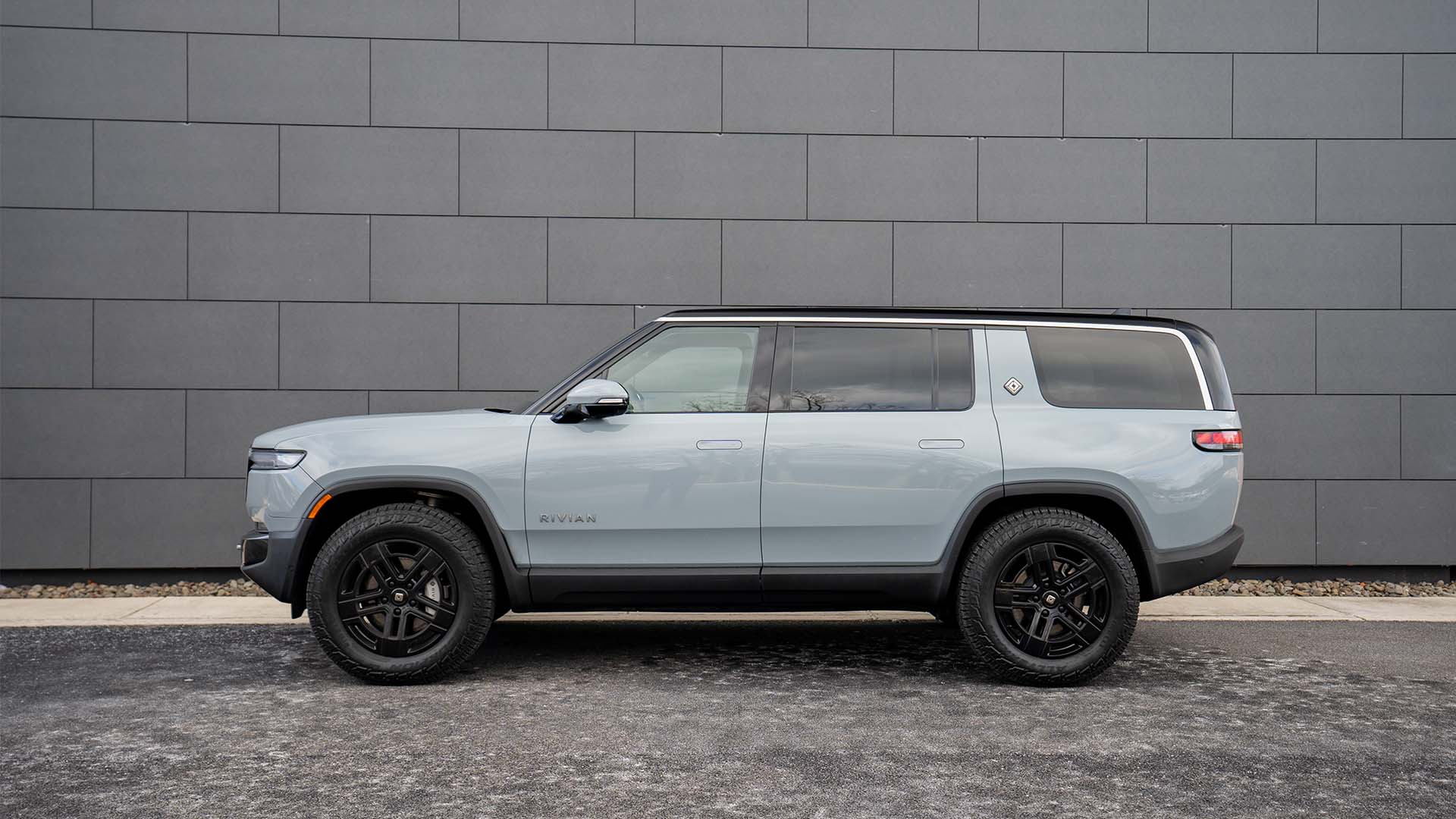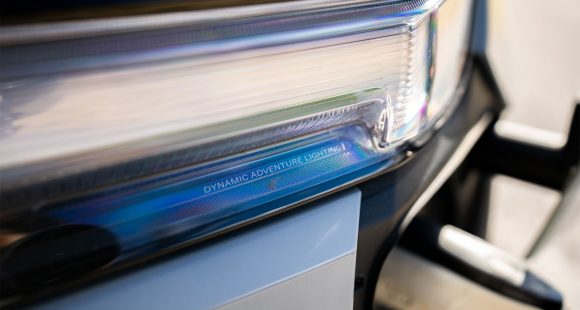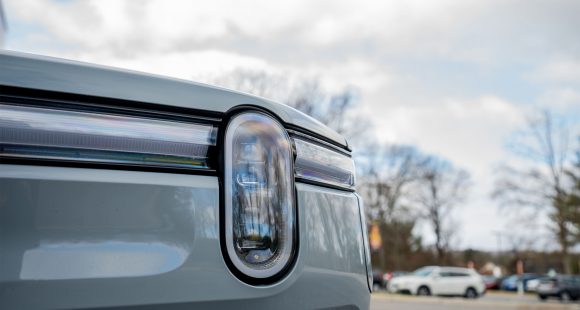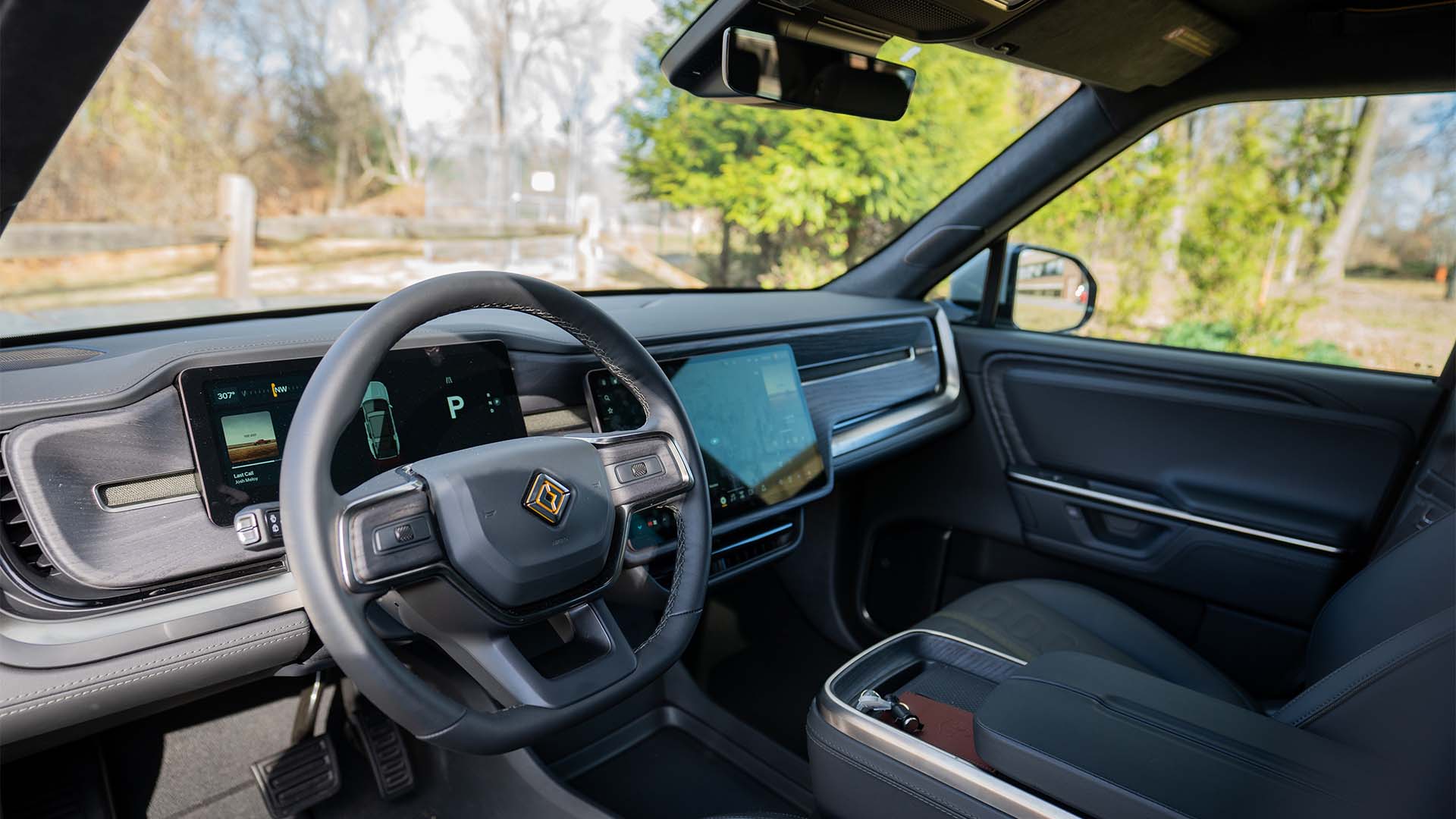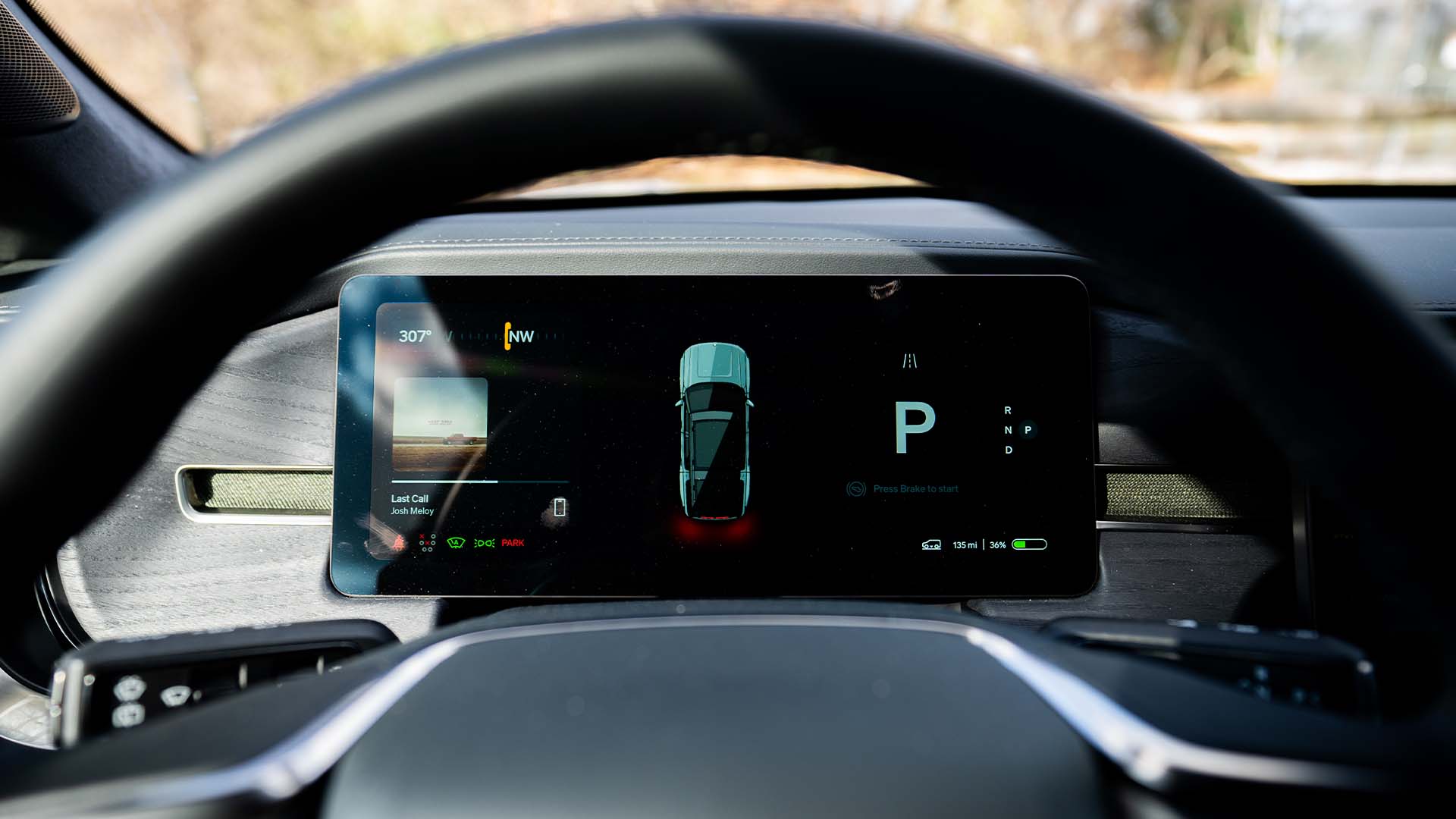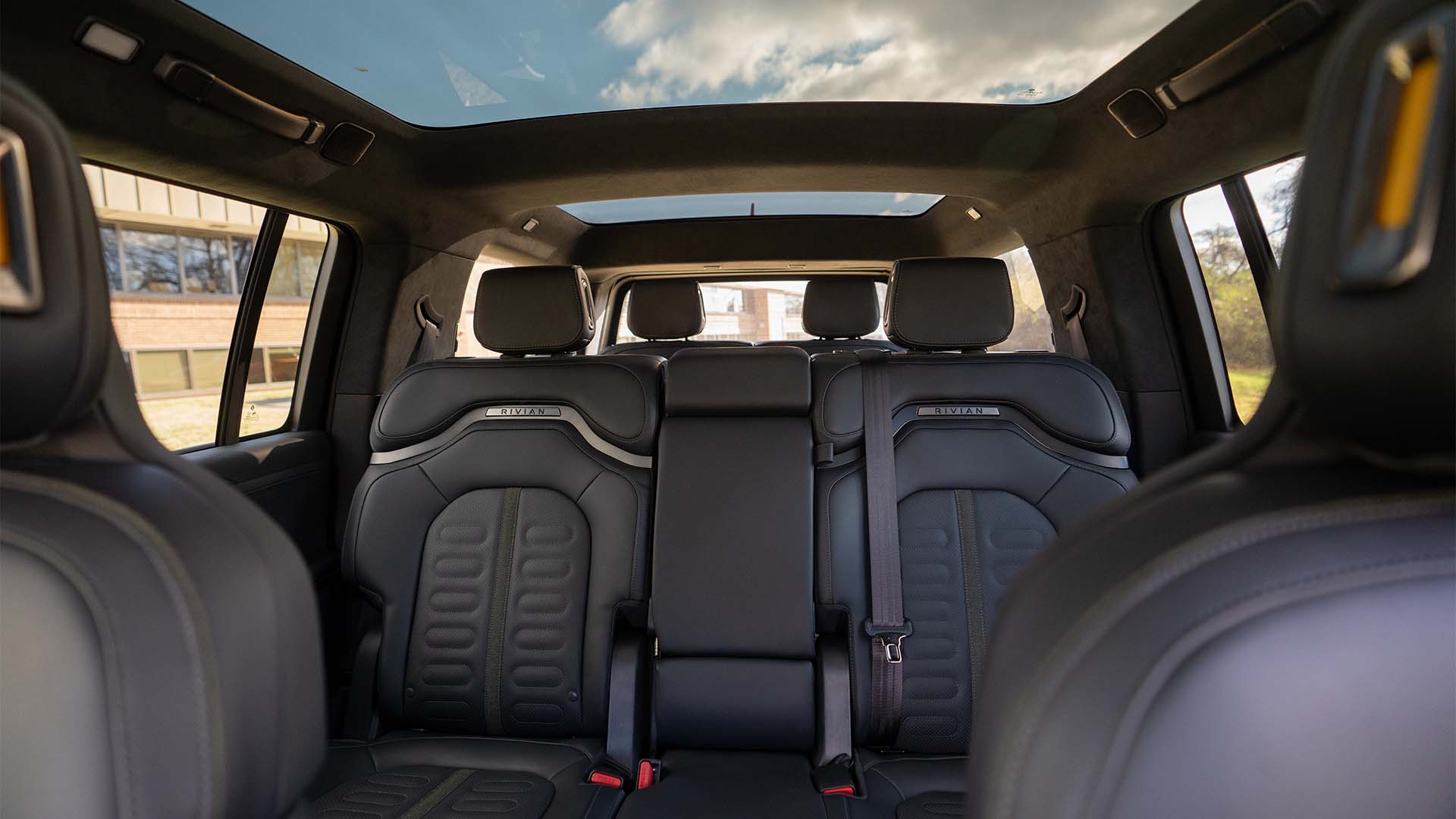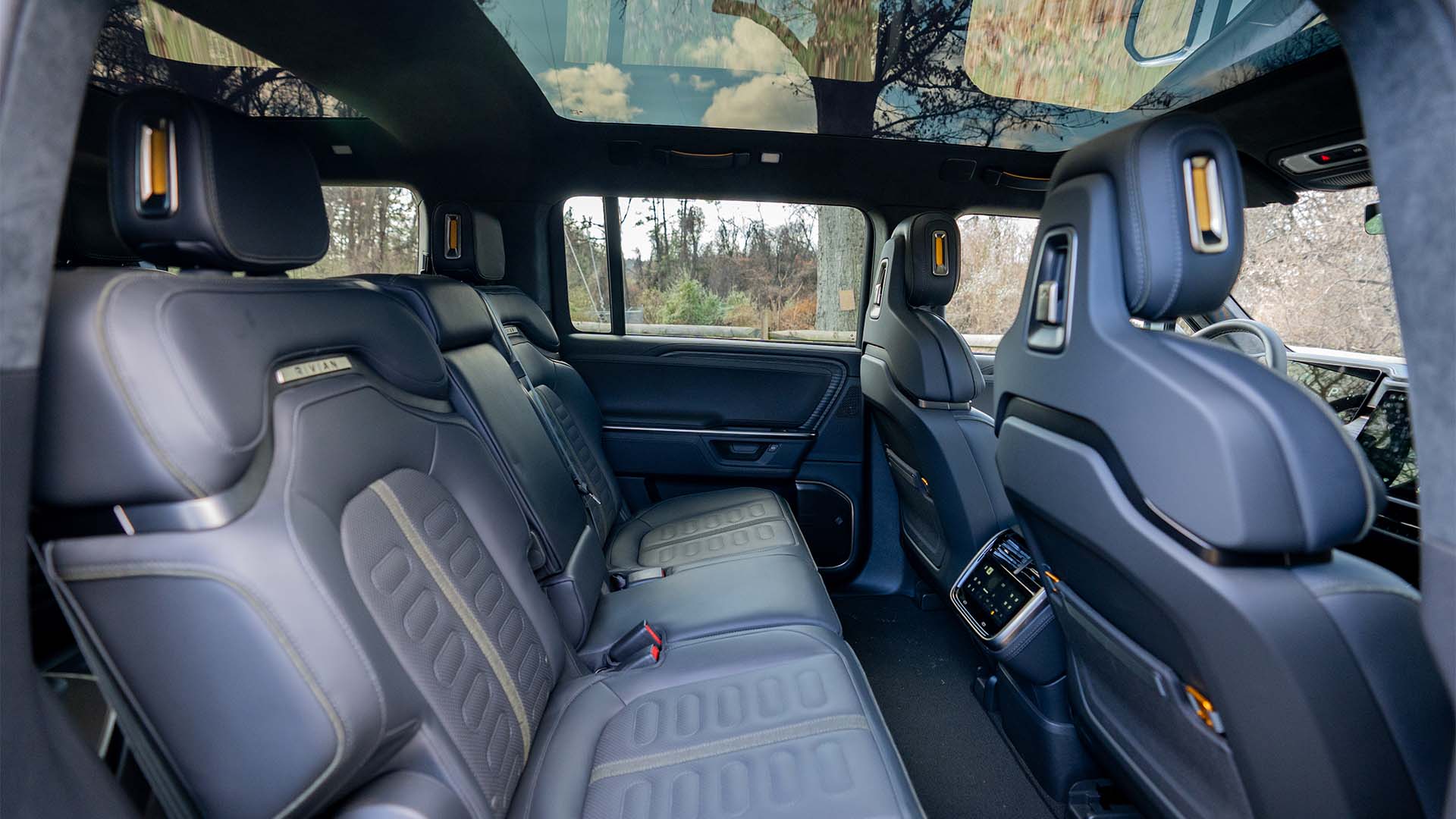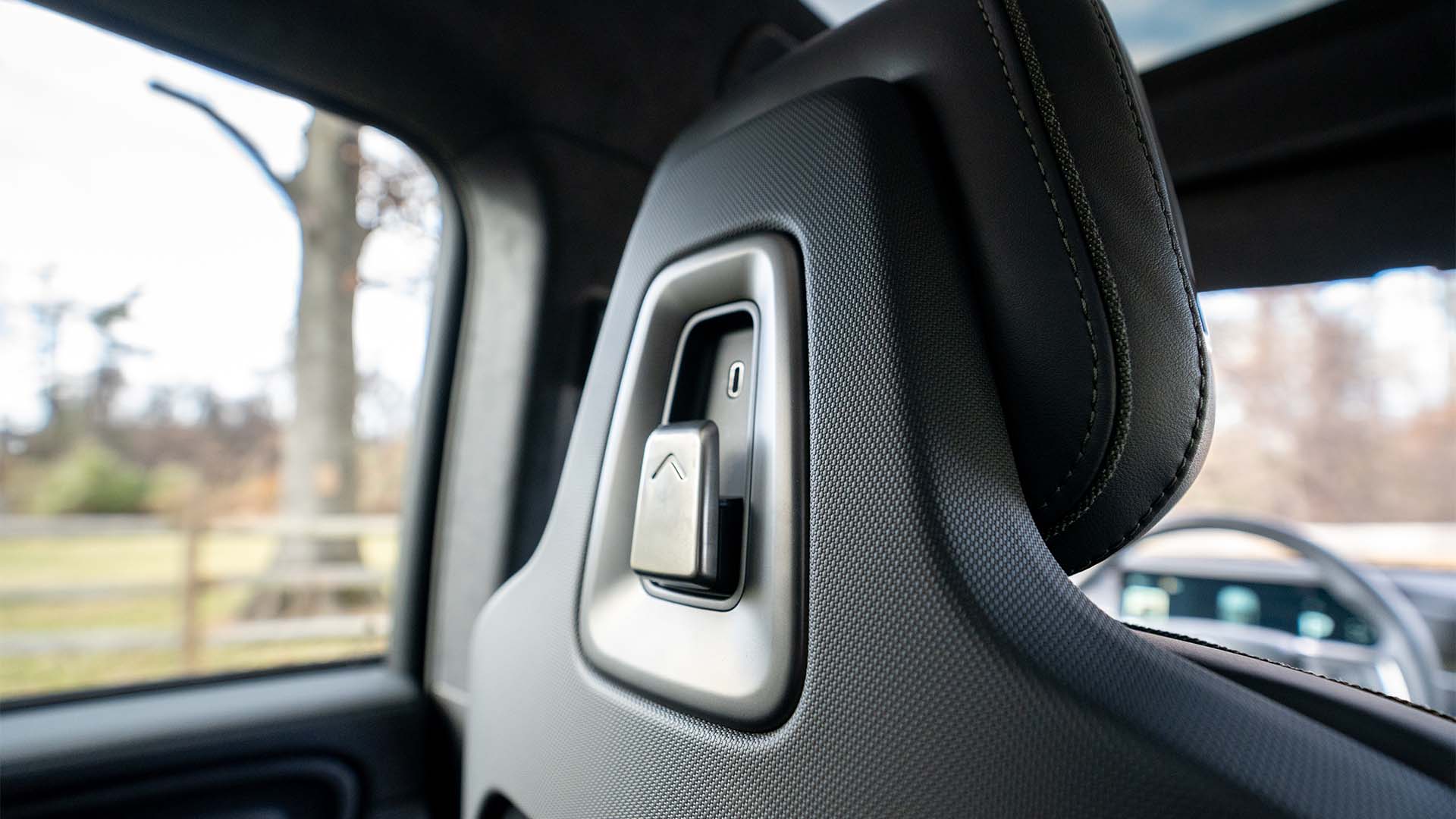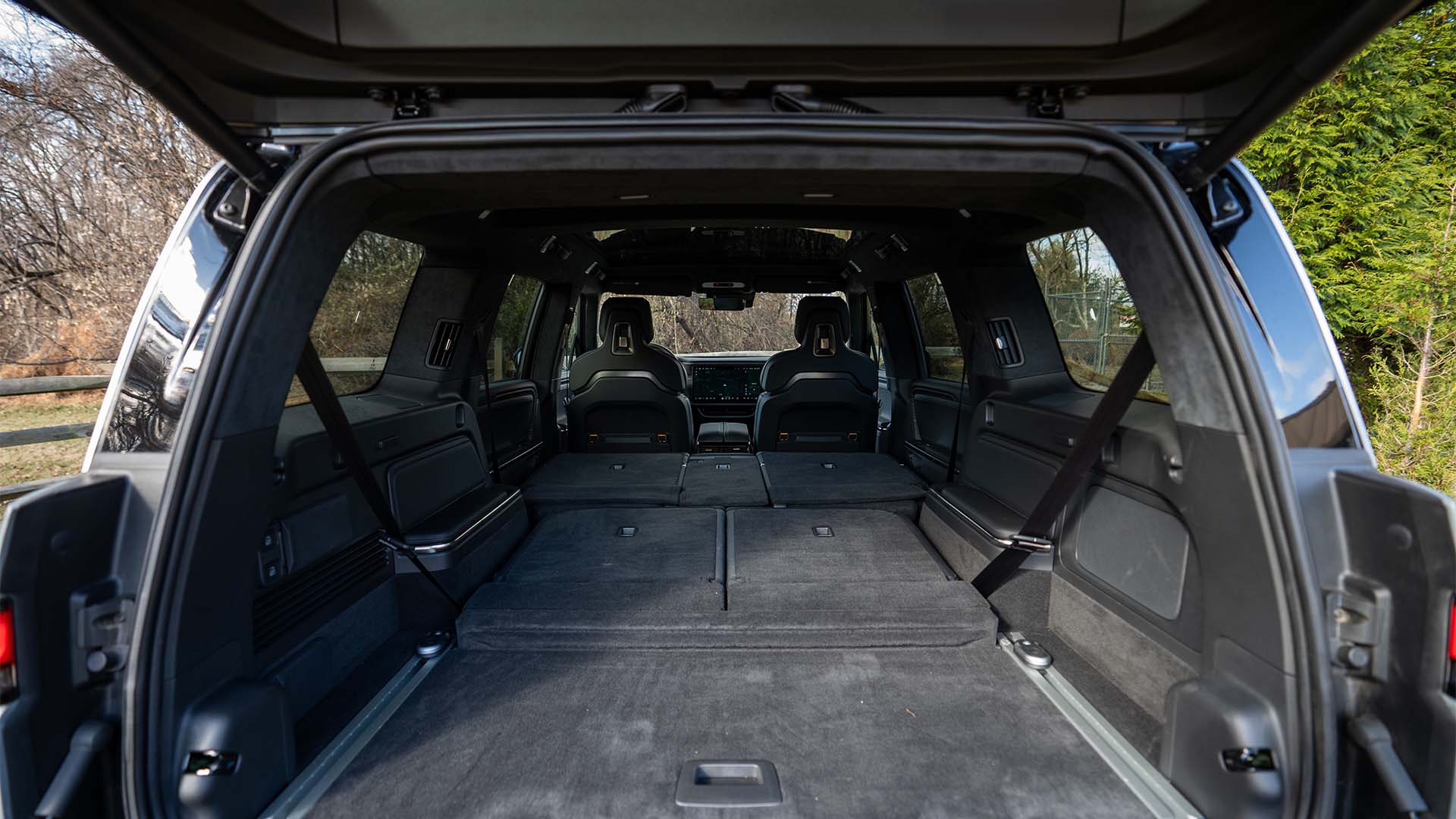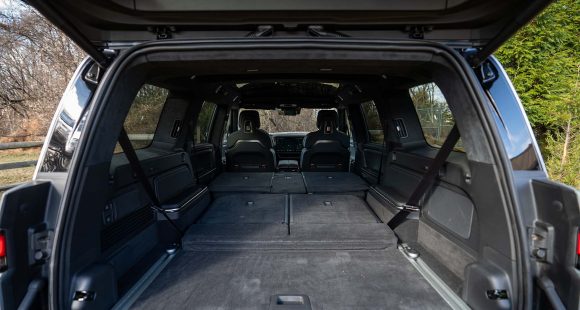2023 Cadillac Escalade V
Going Where Cadillac Has Never Gone Before
Sport utility vehicles continue to gain in their popularity primarily because of their practicality and sensibility. But every once in a while, an SUV comes along that’s not really all that sensible at all, but a whole lot of fun. So, let’s see what happens when Cadillac puts the V in Escalade.
 Seeing a V badge on a Cadillac has meant various levels of high performance over the years. But, no doubt Caddy went above and beyond with the CT5-V Blackwing; a Drivers’ Choice winner for us, and a car that will easily go down as one of the most incredible American sport sedans ever. How did Cadillac decide to follow that up? With their first ever V-Series SUV, the 2023 Cadillac Escalade-V.
Seeing a V badge on a Cadillac has meant various levels of high performance over the years. But, no doubt Caddy went above and beyond with the CT5-V Blackwing; a Drivers’ Choice winner for us, and a car that will easily go down as one of the most incredible American sport sedans ever. How did Cadillac decide to follow that up? With their first ever V-Series SUV, the 2023 Cadillac Escalade-V.
Getting right to the heart of the matter, under this ferocious beast’s tall hood lies a supercharged 6.2-liter V8, similar to the one found in the CT5-V Blackwing; only it gets an even bigger supercharger, and outputs an incredible 682-horsepower and 653 lb-ft. of torque. That’s 14 more horsepower than in the CT5, and a whopping 262 more than you could previously get in an Escalade.
You’ll get clued in that this is something special right at startup. It comes to life with an obnoxious roar, before settling down to a gentle rumble. The Escalade’s 10-speed traditional automatic is recalibrated to properly manage the additional power, and Cadillac’s full-time active all-wheel-drive system is in place to transfer all to the pavement.
On the well-prepped pavement of our Mason Dixon test track, this Escalade was everything we’d hoped it would be. Initiate launch control, and the V explodes off the line with a tsunami of torque, hitting 60 in 4.4-seconds. Gear changes in the automatic trans hit harder than a few dual-clutch units we’ve tested. It will rev to 6,200 RPM, but since torque plateaus at 4,400 there’s no real reason to run it up that high; and the Escalade-V seems to know this, short-shifting at around 5,500 throughout the 12.7-second ¼-mile at 111 miles-per-hour. The sound? Pure automotive bliss!
 Cadillac will build you an Escalade-V in either the standard or extended wheelbase ESV; our standard-length tester weighs in at 6,200-lbs. And, while not quite a one-trick-pony, acceleration is clearly the star of this rig’s show. Both magnetic ride control and Air Ride Adaptive Suspension are standard with upgraded programming. But, the actual suspension hardware is upgraded too. Plus, customizable performance settings are available at the touch of the console-mounted V-button.
Cadillac will build you an Escalade-V in either the standard or extended wheelbase ESV; our standard-length tester weighs in at 6,200-lbs. And, while not quite a one-trick-pony, acceleration is clearly the star of this rig’s show. Both magnetic ride control and Air Ride Adaptive Suspension are standard with upgraded programming. But, the actual suspension hardware is upgraded too. Plus, customizable performance settings are available at the touch of the console-mounted V-button.
Excellent steering feel, and GM seems to have dialed back the eagerness of this platform’s stability control system; all without having to pay a harsh ride penalty. There are new 6-piston Brembo calipers on the front wheels, and it only took 107-feet to stop us from 60.
We think Cadillac did a great job making this V looking unique with upgraded front and rear fascias, 22-inch rims, quad exhaust tips, and of course multiple V-logos outside and in; without being too over the top. It’s not quite a sleeper, but pretty close. Sitting at the top of the Escalade’s heap means Platinum trim is the starting point, with Zebra wood trim, 36-speaker AKG Studio Reference audio, and leather seating for all 3-rows. As in all Escalades, a 38-inch curved display sits atop the dash, segmented into sections for the gauges, infotainment, and a small control panel.
There are acres of space for each of the 3-rows of passengers. However, this is still a body-on-frame truck. So, there’s not quite the user-friendliness buyers have gotten used to in crossovers. But of course, no unibody can haul as much cargo, with 25.5 cubic-ft. of space behind the 3rd row, 72.9 behind the 2nd, and a max of 121; while matching the Escalade-V’s 7,000-lbs. tow rating.
 Everything inside looks great, and all of the tech is certainly up to date; but the Escalade still doesn’t have that upper-class feel that you get in many European performance utilities. Still, as for the actual driving, daily comfort, and the great V8 sounds this thing puts out, nothing from across the pond comes close.
Everything inside looks great, and all of the tech is certainly up to date; but the Escalade still doesn’t have that upper-class feel that you get in many European performance utilities. Still, as for the actual driving, daily comfort, and the great V8 sounds this thing puts out, nothing from across the pond comes close.
Government Fuel Economy Ratings for our standard-length V are 11-City, 16-Highway, and 13-Combined. As awesome as the Escalade-V is, it’s hard not to be a little disconnected when you see the price, $150,990 to start; $153,990 for the Suburban-sized ESV.
Would we spend that much for a GM truck-based utility vehicle, even one as amazingly monstrous as this 2023 Cadillac Escalade-V? Good question. Probably not. But, it might just be the future collectible of the year! So, we wouldn’t blame anyone for grabbing one, and might even ask to borrow the keys every once in a while.
Specifications
- Engine: 6.2L Supercharged V8
- Horsepower: 682
- Torque: 653 lb-ft
- 0-60 mph: 4.4 seconds
- 1/4 Mile: 12.7 seconds at 111 mph
- 60-0 Braking: 107 feet (avg)
- EPA: 11 City / 16 Highway / 13 Combined
2025 Rivian R1S
Major Reboot for Rivian R1S
With just about every mainstream carmaker now onboard with battery-electric vehicles, EV-only brands are hoping there are still plenty of people out there willing to think outside the box. So, let’s see if Rivians latest R1S utility can make the case for taking the EV road less traveled.
Big changes have happened in the short time since the Rivian R1S first hit the streets three years ago. As for 2025, there are updates that touch just about every aspect of the vehicle. Yes, despite looking almost exactly the same outside, Rivian claims that beneath the surface, their entire electrical architecture has been significantly updated, eliminating a whopping mile and a half of wiring and 10 computer assemblies, allowing for more efficient operation.
But look closely and you will see their signature vertical oval headlights are updated with a new matrix of LED lights that can cycle individual elements on and off to provide maximum illumination where you need it without distracting oncoming drivers.
Not much change in the look of the interior either, but the synthetic leather upholstery is still very nicely done, though most touchpoints feel more rugged than luxury minded. With the exception of a couple controls on the steering wheel, you do still have to do almost everything on the R1S’s 15.6-inch touchscreen, but the user interface has been improved. So, while we do wish they could have reverse-engineered a knob or two into the mix, we realize full touchscreen interface is just what people expect in their high-end EVs these days, and at least it works better than before. And the gauge display still wows you with the amount of information it displays and is mounted high enough that no additional head-up display is needed. A new Rivian Autonomy Platform uses 11 cameras, five radars and A.I. for self-driving, or just to monitor what’s going on around the vehicle even when it’s parked.
This [EV] really feels fast, sitting you up high and throwing you back in your seat with authority.
Rivian has also given the R1S a substantial suspension revision with new spring rates, bushings, and mounts; along with new tuning for the adaptive dampers and roll-mitigation system. It does provide a more balanced street attitude, but it still rides like a truck. That’s great if that’s the experience you’re looking for; not as ideal if you’re looking for more of the smooth luxury-style treatment.
All R1Ss are all-wheel drive, but there’s a wide variety of powertrain options including a new Tri-Motor setup. Outputs range from the standard Dual-Motor’s 533 horsepower to the Quad-Motor’s impressive 1,025. There are several battery packs as well, delivering as much as 410 miles of range, giving the R1S the highest rating of any SUV on the market right now. Our Adventure trimmed tester featured the 665-horsepower Performance version of the Dual-Motor arrangement, with the Max battery and 20-inch wheels with all-terrain tires.
Theoretically, that setup is rated for 370 miles, but perhaps we were enjoying the “performance” theme too much as our results were well short of that, using 68% of the battery to drive only 189 miles, putting our estimated range around 278 miles. Using 43 kilowatts of electricity for every 100 miles earns the R1S a fair efficiency rating.
But all was forgiven at our Mason Dixon test track when this Rivian started blasting us to 60 in 3.8 seconds. Yes, there are faster EVs, but this one really feels fast, sitting you up high and throwing you back in your seat with authority, while the rear of the truck squats down substantially before hurling you off the line and down the track. Power delivery stayed strong the entire time, cranking away until we cleared the quarter-mile in 10.5 seconds at 108 mph.
Despite this utility’s substantial size and weight, we were able to keep a pretty fast pace through the cones of our handling course. The all-terrain tires obviously didn’t grip the pavement as well as all-seasons would, but the low center of gravity kept things very flat. Yes, it does feel very heavy, but the brakes were more than up to the task, stopping us from 60 mph in a very short 103 feet with surprisingly little nosedive and no fade.
Pricing starts at $77,700 for the Dual-Motor with Standard battery pack; our Dual-Motor Performance with the Max battery and All-Terrain Package came in just over $102,000.
While Rivian has had great initial success; sustaining that success will be a much tougher task. But, if they continue to put as much effort into improving their products as they have here with the 2025 R1S, we think their winning streak will only accelerate.
Specifications
As Tested
- Motor Setup: Dual Motor
- Battery Size: 141.5 kWh
- Horsepower: 665
- Torque: 829 lb-ft
- EPA Range: 370 miles
- 0-60 mph: 3.8 seconds
- 1/4 Mile: 10.5 seconds at 108 mph
- Braking, 60-0 (avg): 103 feet
- MW Test Loop: ~278 miles










